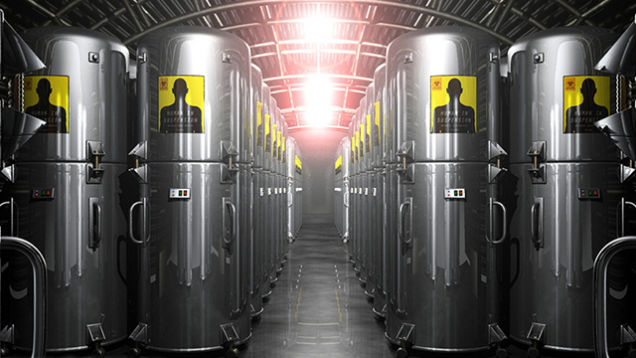|
By Tiago Palmisano
Edited By Bryce Harlan Before the evolution of modern medicine, a fight with disease was all too often a sentence of doom. The lack of knowledge concerning antibodies and vaccines left doctors with a weak defense against the majority of illnesses, which understandably led to a longstanding association between sickness and the supernatural. Fortunately the work of generations of scientists have shifted the fight in our favor, exemplified by the successful battles against smallpox, polio, and countless others viruses. Yet despite our advances, one virus still carries the ominous horror that it has for centuries. Until 2004, no one had ever contracted the symptoms of rabies without receiving the post bite inoculation and lived, when a pediatrician shocked the medical world with his last-ditch attempt – the Milwaukee Protocol. Rabies is a virus transmitted through contact with the saliva of an infected animal – most often through a bite wound. The virus travels through the nervous system to the brain and spinal cord, where it causes acute inflammation. The symptoms caused by this inflammation come straight out of a scary movie – delirium, hallucinations, hydrophobia, and hyperactivity to name a few. Zora Neale Hurston famously depicts a case of human rabies in her seminal novel Their Eyes Were Watching God. Since the virus must work its way from the wound site to the central nervous system, symptoms typically don’t appear until one to three months after infection. Louis Pasteur and Émile Roux developed a rabies vaccine in the late nineteenth century, but it is only effective if administered before symptoms appear; once they do, the disease is 100% fatal. Or at least it was, until a bat bit Jeanna Giese, a 15-year old girl from Wisconsin. Giese, like many other bite victims, did not seek medical treatment. Due to the rarity of rabies, many are unaware that a wild animal could be carrying the disease. Unfortunately, this leads many patients to discover their condition only after symptoms appear, at which point the vaccination is useless. (I highly suggest that you visit a doctor if a wild animal ever bites you!) By the time Giese was in the hospital, her brain had already started swelling and her neurological symptoms were apparent. Her sentence was the same as rabies victims from the Middle Ages – death was inevitable. But one of the doctors assigned to Giese, a pediatrician by the name of Rodney Willoughby, refused to accept the doom that had forever been tied to the disease. After a bout of research, Willoughby reasoned that if Giese’s brain activity could be slowed down, then perhaps the virus would be less damaging to the neurons. So Willoughby and his fellow doctors, with help from the CDC, decided on a combination of drugs that would put Giese in a medically induced coma and slow her brain function. The treatment, now called the Milwaukee Protocol, did what everyone thought was impossible. By calming the inflammatory effects of the virus, it gave Giese’s body time to produce antibodies and fight. Jeanna Giese survived, underwent rehabilitation, went to college, and got married. She was the first person in recorded history to develop symptoms of rabies and live. The Milwaukee protocol has since been revised, and it has managed to save an additional five patients in 42 attempts. The fourth version of the protocol, last updated in 2012, is available for download on the Medical College of Wisconsin’s website. Unfortunately, much of the science behind the rabies virus and the Milwaukee Protocol remains hidden behind the biological curtain. Research is currently underway to better understand the disease and to find more effective treatments. Critics of the Milwaukee Protocol have claimed that it is ineffective, expensive, and severely dangerous. Additionally, studies since 2004 have discovered evidence that contradicts Willoughby’s initial reasoning. A 2013 article from the scientific journal Antiviral Researchsuggests that a more detailed pathological understanding of rabies is required for a significant advancement in treatment. Nevertheless, the story of humanity’s first successful battle against this sinister virus has become medical legend. In fact, this article was inspired by a great piece in Wired magazine titled Undead: The Rabies Virus Remains A Medical Mystery. As an aspiring scientist, I find the tale of Jeanna Giese and the Milwaukee Protocol both romantic and motivating. It is a testimony to the fact that the march of science (with a touch of human persistence, of course) continues to defy longstanding assumptions. The lesson I hope to provide is that with determination and a pursuit of knowledge, anybody can contribute to our fight against the unknown. Note:The previous version of the article said that Jeanna Giese was bitten by a rabbit and that she was the first survivor who has not received post bite inoculation. In fact, as Dina pointed out in the comment section, Jeanna Giese was bitten by a bat and she was the first survivor to not receive the post bite inoculation. In 1970, Matt Winkler was the first rabies survivor to be recorded. CSR regrets these errors.
0 Comments
Written By Jack Zhong
Edited By Josephine McGowan Every year, a lucky turkey gets pardoned, and his many friends end up on the tables of many families across America. At the thanksgiving feast this past weekend, we piled on the turkey, cranberry sauce, sweet potatoes, pies, stuffing, gravy, ice cream, etc. Smiling approvingly at family and friends, we devour our overloaded plate, testing the limits of our stomach. After the dinner, we felt sleepy and were immobilized on the couch. With drowsy voices, many across the US discussed with fellow feasters about how the turkey made them sleepy with its high levels of tryptophan, before making battle plans for getting discounts and door-buster deals on Black Friday. It is commonly believed that the high level of tryptophan in the turkey is the cause of the drowsiness. An amino acid common in meats, tryptophan has a sedating effect on the human body, and tryptophan can be chemically converted to the neurotransmitter serotonin. Then, serotonin can then be converted to melatonin, and both serotonin and melatonin will cause sleepiness. However, the theory of high levels of tryptophan in turkey causing sleepiness does not hold up under further examination. Turkey does not have more tryptophan than other meats. Equivalent servings of chicken, turkey, and beef contain equivalent amounts of tryptophan. Typically, the turkey, chicken, or beef will have about 320mg of tryptophan per 3.5oz of meat. The other types of meat are not usually associated with drowsiness like turkey, even though they have roughly the same levels of tryptophan. Thus, turkey does not have “high levels of tryptophan” as many would believe. Alternatively, the quantity of food consumed may play a bigger role in causing drowsiness. Even if turkey has the same level of tryptophan per ounce as other meats, eating ungodly amounts of turkey would mean taking in more tryptophan; the ensuing increase in serotonin and melatonin levels and cause sleepiness. In response to food intake, the nervous system affects the body’s energy level. The parasympathetic nervous system (PSNS) in our body activates during eating and digestion. Think of the PSNS as the part of the nervous system that tells the body to “rest and digest.” It is the opposite of the sympathetic nervous system (SNS), which activates during high intensity activities and danger. The SNS acts in opposition to the PSNS, and it is active in “fight or flight” situations, like running into a wild bear in a forest. The huge volumes of food eaten at Thanksgiving will increase activation of the PSNS and deactivate the SNS, telling the body to rest. In addition to the tryptophan from turkey contributing to drowsiness, other thanksgiving food contains a lot of carbohydrates or carbs. For example, potatoes, bread, stuffing, apple pie with ice cream comes loaded with a lot of starch and sugar, both of which are carbs (Figure 4). Eating food high in carbs reduces the time it takes for healthy sleepers to go from full awake to sleep (Afaghi et al. 2007). Digesting the carbs will increase blood glucose levels, which will cause a spike in insulin as the body attempt to lower blood glucose levels (Burdakov et al. 2006). The increase in insulin helps intake of large neutral amino acids (LNAA) into muscle, but not tryptophan. The increase in tryptophan to LNAA ratio will help tryptophan enter the brain. In addition, glucose has been shown to inhibit orexin neurons, which promotes wakefulness and control consciousness and metabolism. Further, the alcoholic beverages like wine and beer add to the drowsiness. Alcohol is a depressant, reducing arousal in different areas of the brain. Not to mention, the process of cooking a ludicrous quantity of food and socializing with relatives and friends can be physically taxing, further adding to the tiredness one feels after. Thanksgiving dinner. From studies on tryptophan levels to our understanding of the central nervous system, we see that turkeys should be pardoned for causing the sleepiness we felt after Thanksgiving dinner. Rather, our choices to overstuff our faces with meat, carbs, and alcohol that ultimately led to our downfall on the couch. By Kimberley Shen
Edited By Arianna Winchester On January 8, 2015, a two-year old Thai girl named Matheryn Naovaratpong died of ependymoblastoma, a rare form of brain cancer. Over the course of almost a year, she had 12 brain surgeries, 20 chemotherapy treatments, and 20 radiation therapy sessions. However, in spite of her doctors’ best efforts, the cancer continued to spread and ultimately paralyzed her face and muscles. Knowing that their daughter had no hope of recovery, Matheryn’s parents, Sahatorn and Nareerat Naovaratpong, decided to take her off life support. But even as their daughter’s health was rapidly deteriorating, Matheryn’s parents still wanted to give Matheryn another chance at life. They decided to contact Alcor, a non-profit organization in Arizona that cryonically preserves the bodies of the deceased. For a fee of $80,000, they will deep freeze a human brain and the body it came from. Alcor already has over 130 humans in cryopreservation. Many prominent figures have already been cryopreserved with the help of Alcor, including famous baseball player Ted Williams and his son, John Henry Williams. Alcor is quite optimistic about the future of the human remains it preserves, stating that its company mission is “to prevent death by preserving sufficient cell structure and chemistry so that recovery (including recovery of memory and personality) remains possible by foreseeable technology.” Shortly after Matheryn was pronounced dead, the Alcor team began their “cryoprotection” procedure. Two-year old Matheryn became Alcor’s youngest patient so far. Matheryn’s body fluids were removed and replaced with anti-freeze in order to prevent tissue damage during the deep freeze process. Her brain was then removed and preserved at a temperature of -196°C. Her brain is intended to remain frozen until medical technologies find a way to revive her body and unite her with her brain. However, many scientists remain skeptical about cryonics. Dr. Michael Shermer, an American science writer, argues that, “at the moment, the chances of resuscitation are pretty close to zero.” In response to many cryonicists’ arguments that human embryos have been frozen and used again, he asserts, “Freezing single cells or an egg is one thing. A dog or human is more complex.” Nevertheless, in spite of the skeptics, Sahatorn Naovaratpong and his wife both seem optimistic about the possibility of their daughter’s revival, declaring that they “believe death can be overcome in the future. Human beings are seeing technology increasing exponentially. It just doubles, doubles, doubles.” He and Nareerat have been accumulating artifacts from Matheryn’s past life on hard drives. If she is revived, her parents hope that she will be able to turn to this collection of family photos, video clips, and hospital records to gain a better understanding of her past life. Sahatorn even said that he and his wife hope to cryopreserve their own bodies in the hopes that they can be reunited with their daughter. Although Sahatorn acknowledged that the chances of this dream coming to fruition are slim, he hopes that medical advances will keep them both alive long enough to see their daughter again. |
Categories
All
Archives
April 2024
|



